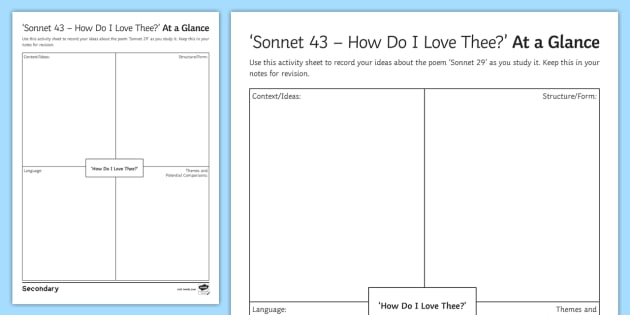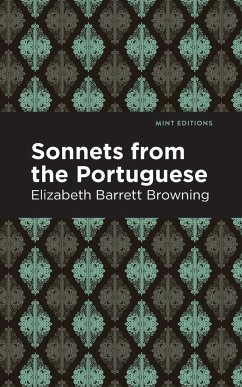

'Thee' was very old fashioned in Victorian times and perhaps Browning is trying to make the voice in the sonnet sound timeless, emphasising the timelessness of her love.

The poet leaves us in no uncertainty about her feelings and the use of "thee" creates a romantic and nostalgic feeling. This is an unfettered declaration of love. The use of repetition or anaphora: "I love thee" exaggerates the passion in her voice. Her love is unconstrained and fluid and expands beyond lines of poetry. She then follows this up with two lines of enjambement which create a passionate, emotional tone and emphasise the largesse or greatness of her love. It's almost as though she is challenging the reader with this audacious question: "How much do I love thee?" and then it's immediate response: "Let me count the ways." this is playful in tone as the reader knows that love is impossible to "count".

Structure: The opening of the poem is quite energetic with the short question and response being contained in the first line. Falling in love with her husband seems to be a religious experience for her. This again, connects the idea of romantic love with Godliness. However, she is saying that "if God choose", she will love him beyond death. The final rhyme is "breath" and "death" emphsising the shortness of life: "breath" symbolising the fragility of life and "death" the end of life. This deepens the idea of her love and suggests that her love is a whole emotion which embraces and surpasses all other intense emotions, be they joy or sorrow.

The sestet introduces imagery of death and sadness,which might seem out of place after the excitement of the first octave: "lose", "lost saints", "childhood griefs" and "death". All of this suggests that her love for Browning is a moral imperative: she is ordained by God to love him and it is her spiritual destiny to do so. The second half of the octave builds on this idea as she lists the ways in which she loves him but continues to used ideas associated with religion: "purely", "freely", "candle light", "as men strive for right". The use of enjambement at the end of the second line emphasises her exuberance and emphasises the idea of her soul and love being a transcendental experience. Obviously love is impossible to measure in this way but by mixing these ideas Browning introduced both the physical and spiritual aspects of romantic love. Imagery: Browning opens with a ridiculous question: "How much do I love thee?" and then proceeds to use language from the semantic field of measurement: "count" "height", "breadth" and "depth" mixed with the abstract concepts of "soul", "grace" and "love".


 0 kommentar(er)
0 kommentar(er)
